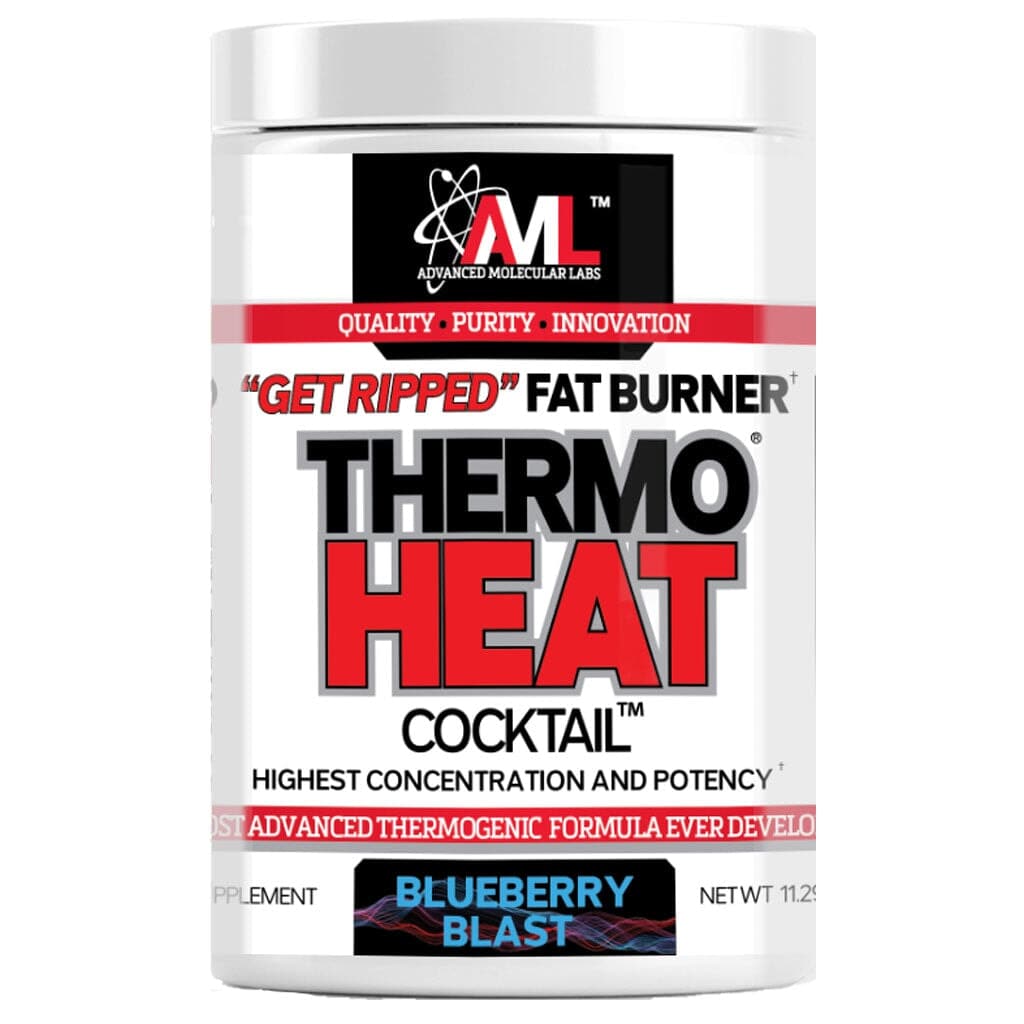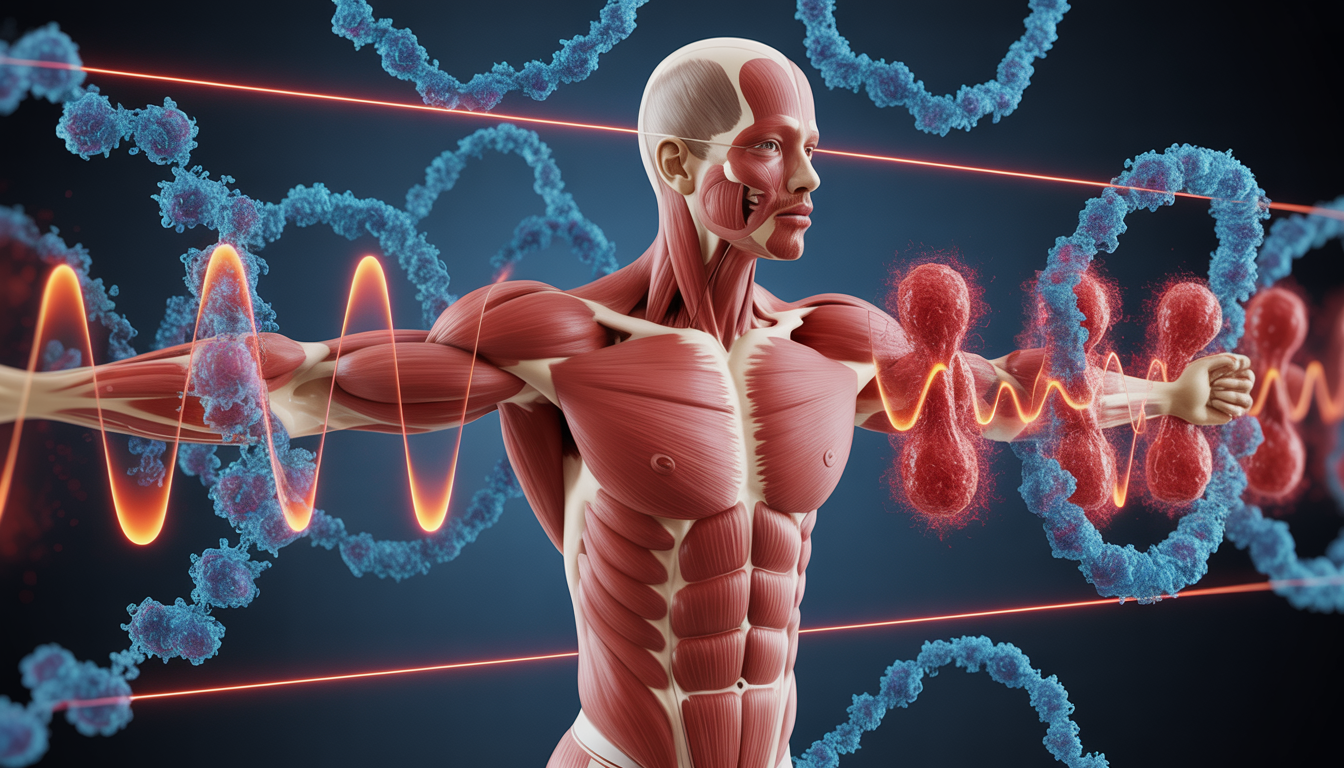


BCAA's for Weight Loss: The Latest Scientific Research
By Steve Blechman
BCAA's for Weight Loss? Recent studies have found branched-chain amino acids (BCAAs) to be associated with obesity. In a new study in the journal Metabolites on April 7th, 2022 researchers “performed an individual data meta-analysis of metabolomics on body mass index (BMI) and obesity in 3,397 study participants from 6 cohorts correlated from Canada, Australia and USA.” The researchers said that “this was the first individual data meta-analysis of metabolomics on BMI and obesity in populations from Canada, Australia, and USA.”
Metabolomics is an emerging field in precision medicine. It is a powerful analytical profiling technique for measuring and comparing a large number of metabolites in a biological specimen. “The application of metabolomics has led to the discovery of metabolic biomarkers associated with cardiovascular disease, neurological disease, cancer, osteoarthritis, as well as COVID-19. Recent metabolomics studies have identified a signature of altered amino acid profiles highlighting branched-chain amino acids (BCAAs) to be associated with obesity and degree of obesity.”
The researchers acknowledged that “based on the meta-analysis results, we performed a dietary restriction in mice and demonstrated that the restriction of BCAAs within a high-fat diet (HFD) could prevent the development of obesity and insulin resistance, providing a promising strategy to conquer the global pandemic of obesity.”
The branched-chain amino acids valine and isoleucine were “positively correlated with visceral fat mass.” Visceral fat is often referred to as “hidden fat” stored deep in your belly, unlike subcutaneous fat underneath your skin. Visceral fat surrounds your abdominal organs and raises your risk of metabolic syndrome and serious medical issues such as cardiovascular disease, insulin resistance and diabetes.
Over 70% of Americans are overweight. Medical researchers have projected that by 2030, one in two adults will be obese. Obesity increases the risk for insulin resistance and diabetes. A major health concern!
It has been reported in the scientific research over the years that the branched-chain amino acids isoleucine and valine, but not leucine, are positively associated with increases of insulin resistance, diabetes and obesity in animals as well as humans. A study was published on May 4th, 2021 in the journal Cell Metabolism titled, “The adverse metabolic effects of branched-chain amino acids are mediated by isoleucine and valine.” The researchers found that “reduced isoleucine or valine but not leucine, promotes metabolic health in mice.” Also, that “dietary levels of isoleucine are positively associated with BMI in humans,” and increased obesity in men and women. Also, by specifically reducing isoleucine in the diet, you can improve insulin sensitivity and increase energy expenditure and weight loss. The researchers concluded that results suggest that reducing isoleucine “may be a novel therapeutic and public health strategy to combat the twin epidemics of obesity and diabetes.”

A recent study published April 13, 2022 in Nutrition & Diabetes further confirms the detrimental role of valine in insulin resistance and obesity. Research has found that the valine catabolite 3-hydroxyisobutyrate (3-HIB) can increase abdominal (visceral) and liver fat as well as muscle fat, and increase insulin resistance (Nature Medicine, April 2016). Leucine has been shown to enhance weight loss in the scientific literature. A 24-week randomized controlled trial in 267 adults without diabetes found that leucine combined with sildenafil (Viagra) significantly enhanced weight loss. And when the diabetic drug metformin was added, it enhanced the weight-loss effect at a low dose (Am J Ther, January-February 2021). The weight-loss/fat-loss benefits of leucine look promising. Further research in humans is needed to confirm leucine’s health, metabolic and weight-loss effects.
The mechanism of action of isoleucine restriction in the diet and weight loss and prevention of diabetes is suggested to be the upregulation action of fibroblast growth factor 21 (FGF-21). FGF-21 is a hormone that promotes insulin sensitivity and enhances thermogenesis, energy expenditure and caloric burning; isoleucine restriction and enhanced FGF-21 facilitates energy expenditure by uncoupled oxidative phosphorylation and conversion of white adipose tissue (WAT) into beige and brown adipose tissue (BAT), known as brown fat.
For many years I have written articles on the health and fat-loss benefits of brown fat. The widely held belief that all body fat is bad is currently being heavily scrutinized, due to the recent discovery of a different type of fat in humans known as brown fat. This type of fat can actually burn off energy in the form of heat by a process known as thermogenesis, which can ultimately reduce overall body fat. The body has two forms of fat: white fat or unwanted fat that can lie directly underneath the skin; and brown fat, which often is found in the shoulder blade region or the neck. Unlike white fat, brown fat is the good fat as it can help burn more calories. The more brown fat you have, the more calories you burn. Brown fat is packed with mitochondria loaded with UCP-1, the protein that uncouples fat burning with ATP (energy) production instead of converting the energy into heat via thermogenesis, making the mitochondria effectively the furnace of the cell. The emergence of brown fat as a readily available fat burning furnace is revolutionary, but like any fire, it requires the proper kindling materials. The ability to get lean by producing extra brown fat, or enhancing the activity of existing brown fat, represents a promising way to burn fat and lose weight.
Several landmark discoveries and approaches to enhancing brown fat function are being explored at major research centers and universities worldwide, with great excitement – including the possible restriction of the branched-chain amino acids isoleucine and valine in the diet and increase of leucine. Over the past seven years I developed THERMO HEAT® – the most scientifically advanced thermogenic brown fat-activating fat-burning supplement line ever developed! One of these products is called AML THERMO HEAT FAT BURNING PROTEIN®. It is scientifically designed with low levels of isoleucine and valine and rich in leucine and other brown fat activators to enhance brown fat thermogenesis and help preserve lean body mass during dieting.
©Published by Advanced Research Media, Inc. 2022
©Reprinted with permission from Advanced Research Media, Inc.
References:
- Liu M, Huang Y, Zhang H, Aitken D, Nevitt MC, Rockel JS, Pelletier JP, Lewis CE, Torner J, Rampersaud YR, Perruccio AV, Mahomed NN, Furey A, Randell EW, Rahman P, Sun G, Martel-Pelletier J, Kapoor M, Jones G, Felson D, Qi D, Zhai G. Restricting Branched-Chain Amino Acids within a High-Fat Diet Prevents Obesity. Metabolites. 2022 Apr 7;12(4):334. doi: 10.3390/metabo12040334. PMID: 35448521; PMCID: PMC9030079.
- Yu D, et al. The adverse metabolic effects of branched-chain amino acids are mediated by isoleucine and valine. Cell Metab 2021 Apr 16:S1550-4131(21)00166-2. doi: 10.1016/j.cmet.2021.03.025. Epub ahead of print. PMID: 33887198.
- Valine Supplementation Does Not Reduce Lipid Accumulation and Improve Insulin Sensitivity in Mice Fed High-Fat Diet. Qinqquan Ma. ACS Omega 2020, 5, 48, 30937-30945. November 23, 2020 https://doi.org/10.1021/acsomega.0c03707
- Fontana L, Cummings NE, Arriola Apelo SI, et al. Decreased Consumption of Branched-Chain Amino Acids Improves Metabolic Health. Cell Rep 2016;16(2):520-530. doi:10.1016/j.celrep.2016.05.092
- Alemán G, Castro AL, Vigil-Martínez A, Torre-Villalvazo I, Díaz-Villaseñor A, Noriega LG, Medina-Vera I, Ordáz G, Torres N, Tovar AR. Interaction between the amount of dietary protein and the environmental temperature on the expression of browning markers in adipose tissue of rats. Genes Nutr 2019 Jun 4;14:19. doi: 10.1186/s12263-019-0642-x. PMID: 31178938; PMCID: PMC6549346.
- Rebello CJ, Zemel MB, Kolterman O, Fleming GA, Greenway FL. Leucine and Sildenafil Combination Therapy Reduces Body Weight and Metformin Enhances the Effect at Low Dose: A Randomized Controlled Trial. Am J Ther. 2021 Jan-Feb 01;28(1):e1-e13. doi: 10.1097/MJT.0000000000001303. PMID: 33369909.
- Zemel MB, Kolterman O, Rinella M, Vuppalanchi R, Flores O, Barritt AS 4th, Siddiqui M, Chalasani N. Randomized Controlled Trial of a Leucine-Metformin-Sildenafil Combination (NS-0200) on Weight and Metabolic Parameters. Obesity (Silver Spring). 2019 Jan;27(1):59-67. doi: 10.1002/oby.22346. PMID: 30569637.
- Yao K, Duan Y, Li F, Tan B, Hou Y, Wu G, Yin Y. Leucine in Obesity: Therapeutic Prospects. Trends Pharmacol Sci. 2016 Aug;37(8):714-727. doi: 10.1016/j.tips.2016.05.004. Epub 2016 May 30. PMID: 27256112.
- Layman DK, Walker DA. Potential importance of leucine in treatment of obesity and the metabolic syndrome. J Nutr. 2006 Jan;136(1 Suppl):319S-23S. doi: 10.1093/jn/136.1.319S. PMID: 16365106.
- Wu H, Dridi S, Huang Y, Baum JI. Leucine decreases intramyocellular lipid deposition in an mTORC1- independent manner in palmitate-treated C2C12 myotubes. Am J Physiol Endocrinol Metab 2020 Feb 1;318(2):E152-E163. doi:
11.1152/ajpendo.00241.2019. Epub 2019 Nov 26. PMID: 31770014. 10. Zhang L, Li F, Guo Q, Duan Y, Wang W, Zhong Y, Yang Y, Yin Y. Leucine Supplementation: A Novel Strategy for Modulating Lipid Metabolism and Energy Homeostasis. Nutrients 2020 May 2;12(5):1299. doi: 10.3390/nu12051299. PMID: 32370170; PMCID: PMC7282259.
- Li H, Xu M, Lee J, He C, Xie Z. Leucine supplementation increases SIRT1 expression and prevents mitochondrial dysfunction and metabolic disorders in high-fat diet-induced obese mice. Am J Physiol Endocrinol Metab. 2012 Nov 15;303(10):E1234-44. doi: 10.1152/ajpendo.00198.2012. Epub 2012 Sep 11. PMID: 22967499; PMCID: PMC3517633.
- Binder E, Bermúdez-Silva FJ, Elie M, Leste-Lasserre T, Belluomo I, Clark S, Duchampt A, Mithieux G, Cota D. Leucine supplementation modulates fuel substrates utilization and glucose metabolism in previously obese mice. Obesity (Silver Spring). 2014 Mar;22(3):713-20. doi: 10.1002/oby.20578. Epub 2013 Sep 5. PMID: 23894080.
- Jitomir J, Willoughby DS. Leucine for retention of lean mass on a hypocaloric diet. J Med Food. 2008 Dec;11(4):606-9. doi: 10.1089/jmf.2008.0058. PMID: 19053849.
- Fu L, Bruckbauer A, Li F, Cao Q, Cui X, Wu R, Shi H, Zemel MB, Xue B. Leucine amplifies the effects of metformin on insulin sensitivity and glycemic control in diet-induced obese mice. Metabolism. 2015 Jul;64(7):845-56. doi: 10.1016/j.metabol.2015.03.007. Epub 2015 Mar 19. PMID: 25858853.
- McNeill BT, Suchacki KJ, Stimson RH. Human Brown Adipose Tissue as a Therapeutic Target - Warming up or Cooling Down? Eur J Endocrinol. 2021 Mar 1:EJE-20-1439.R1. doi: 10.1530/EJE-20- 1439. Epub ahead of print. PMID: 33729178.
- Santhanam, P, Rowe SP, Solnes LB, Quainoo B and Ahima RS. (2021), A systematic review of imaging studies of human brown adipose tissue. Ann NY Acad Sci. https://doi.org/10.1111/nyas.14579
- Jang C, Oh SF, Wada S, Rowe GC, Liu L, Chan MC, Rhee J, Hoshino A, Kim B, Ibrahim A, Baca LG, Kim E, Ghosh CC, Parikh SM, Jiang A, Chu Q, Forman DE, Lecker SH, Krishnaiah S, Rabinowitz JD, Weljie AM, Baur JA, Kasper DL, Arany Z. A branched-chain amino acid metabolite drives vascular fatty acid transport and causes insulin resistance. Nat Med. 2016 Apr;22(4):421-6. doi: 10.1038/nm.4057. Epub 2016 Mar 7. PMID: 26950361; PMCID: PMC4949205.
- Christopher A. Bishop, et al. Detrimental effects of branched-chain amino acids in glucose tolerance can be attributed to valine induced glucotoxicity in skeletal muscle. Nutrition & Diabetes, volume12, article number: 20 (2022). Published 13 April 2022.











